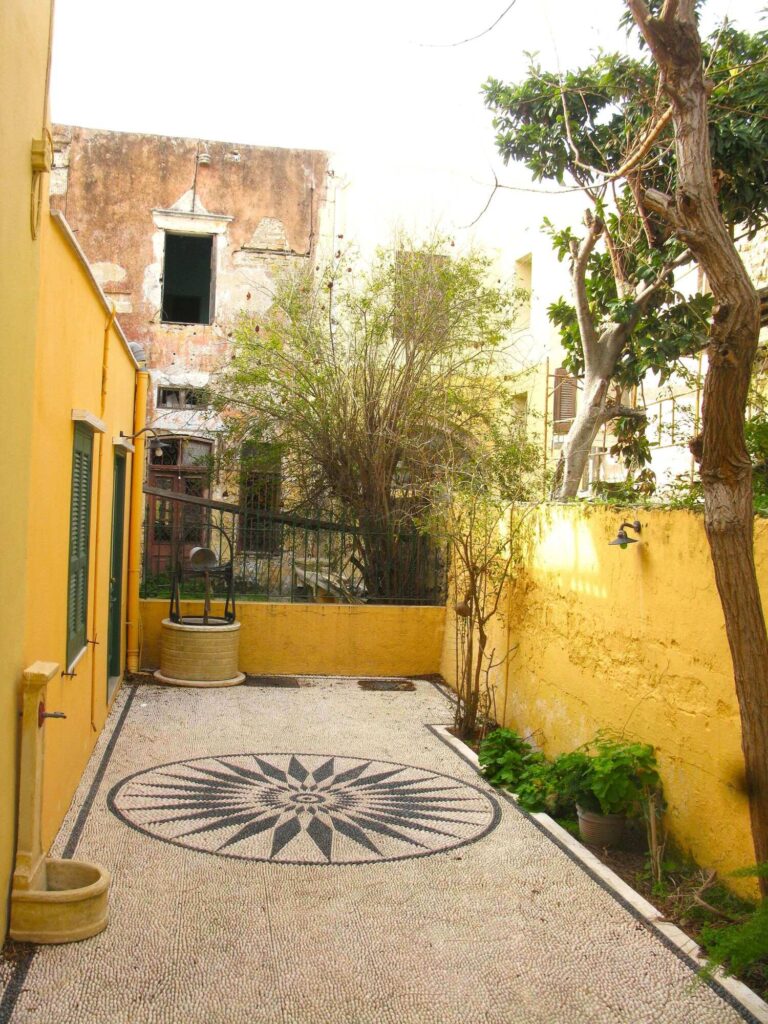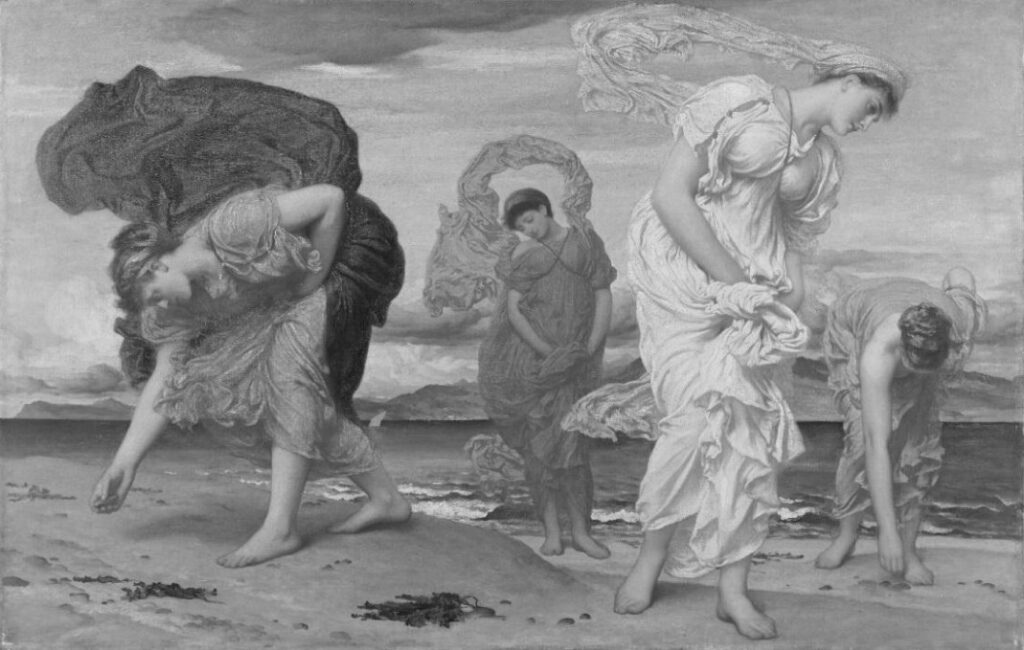
When the Bents reached Rhodes in February 1885, from Alexandria on the steamer Saturno, there were no hotels for them. Tourists were put up in various pensions in ‘Niohori’, the ‘new town’, as opposed to the famous ‘old town’, in which only Turks and Jews were allowed to stay at night.
In his jaunty piece on Rhodes, ‘Rhodian Society’ (1885), Bent advises that “The portly hotel keeper, Nicholas, is sure to appropriate the stranger on the steamer, and carry him to his hostelry in the Greek quarter, built on a sandy promontory about half a mile from the old walled town. It is as quaint an inn as one could possibly desire, with snug little rooms giving on to a balcony which overhangs a courtyard paved with pebbles.” (J.T. Bent, ‘Rhodian Society’. Macmillan’s Magazine, 1885, Vol. 52 (May/Oct), 297-8) Parts of this area remain to delight; most have gone.

E. Biliotti and L’Abbé Cottret, in their L’île de Rhodes, Rhodes (1881, p. 718), provide a little more detail for the visitor: « A proprement parler, il n’y a pas d’Hôtels à Rhodes, mais on trouve chez Nicolas Dhascala et chez Kirà Hroussy, des chambres meublées très-simplement, il est vrai, mais assez proprement, et une nourriture plus abondante que recherchée, pour 4 ou 5 francs par jour, tout compris. On peut obtenir des conditions plus modérés pour un séjour prolongé. »

The pebbles Bent refers to above are a feature of Rhodian architecture (and other islands in the Dodecanese): “Everything is pebbled in Nicholas’s hotel — the courtyard, the dining-room, the balcony, are all laid out in patterns of black and white. These pebbles are quite a trade in Rhodes; veiled Turkish women wander along the shore in search of them, and deposit their treasures in little heaps along the beach. In the good time of the Khedive Ismail in Egypt, very large quantities were exported to Cairo, and large fortunes were realised thereby. Even now the trade is a good one, and every Rhodian house is adorned with them. If you go out into society, you will find before long, to your cost, that you have to dance on a pebbled floor…” (J.T. Bent, ‘Rhodian Society’. Macmillan’s Magazine, Vol. 52 (May/Oct), 297-8)
